Ducati Mike Hailwood Replica
With Ian Falloon
It is now forty-five years since Mike Hailwood came out of retirement to win the 1978 TT Formula One race at the Isle of Man on an NCR Ducati 900. To some of us, June 3rd 1978 seems like only yesterday and it remains one of Ducati’s greatest race victories. Against the odds the then 38-year-old Hailwood won the race at an average speed of 174 km/h, with a fastest lap of 177 km/h.
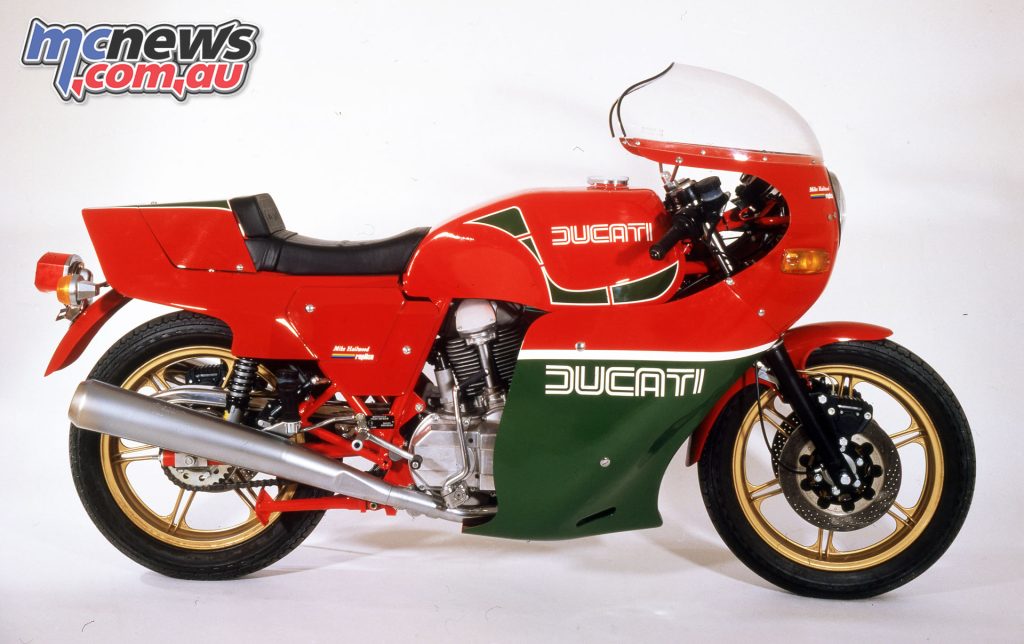
After an absence of 11 years it had been, in his own words, “the easiest TT I can remember”. The Ducati factory was so elated by this victory that, as they had done six years earlier after the Imola 200, they promised street Mike Hailwood Replicas. In typical Ducati fashion they took some time to appear, but they duly arrived later in 1979.
The first models were for the UK market and had a fibreglass cover over a steel 900 SS petrol tank. The rest of the bike was pretty much stock 900 SS. These were not special race replicas like the first 750 Super Sports. They had Nippon Denso instruments from the Darmah, and Gold Series Brembo brake calipers, but the engines were standard 900 SS.

The seat unit left the rear 40 mm Dell’Orto carburettor and battery exposed but that was about the only concession made to replicate the racing model. Wheels on these early bikes were the renowned Speedline or Campagnolo magnesium; the Speedlines notable for disintegrating before your eyes, and cracking on bumpy roads. These early MHRs also had a one-piece fibreglass fairing that made even a basic task like changing the oil a major event.
It wasn’t long before a specific MHR steel tank appeared and FPS aluminium wheels replaced the troublesome Speedline. As the Replica was proving to be exceedingly popular, it was slightly re-vamped over the next few years. There were several versions but the most notable improvement was a two-piece fairing.
Side covers now covered the battery and rear carburettor, but essentially the bike underneath was still 900 SS. Quieter Silentium silencers replaced the barking Contis, but there was still no electric start. This would be remedied during 1983. In the meantime, kick-start only or not, the Replica was by far the most popular bevel-drive model in Ducati’s line-up of the early 1980s.
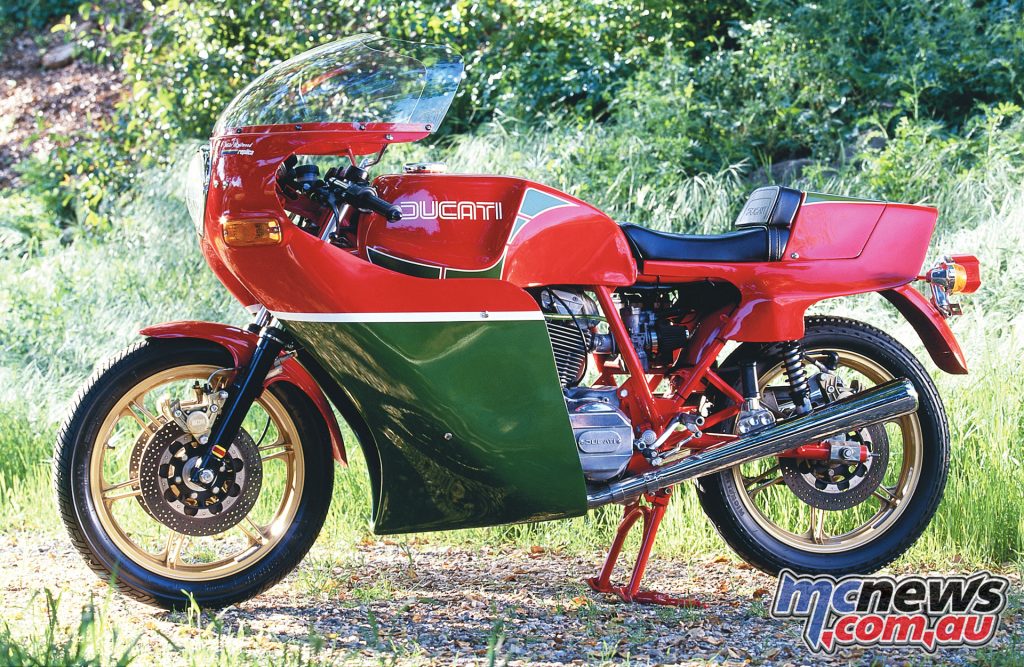
As the Hailwood Replica became larger and heavier, it also became more refined. In the process of developing the new Mille engine, there was an interim 900. While still retaining the 864cc engine and roller bearing crankshaft, new engine covers took the style back to the earlier round-case. Underneath these new covers was a dry hydraulically operated multi-plate clutch, and a much smaller and neater Nippon Denso electric starter motor.
Styling wise, the fairing was narrowed considerably from the previous version. New indicators, tail light and instrument panel, along with slotted side covers, appeared. Internally, the engine was as before, with the same 9.3:1 compression ratio, and the claimed power of 72 horsepower at 7,500 rpm.
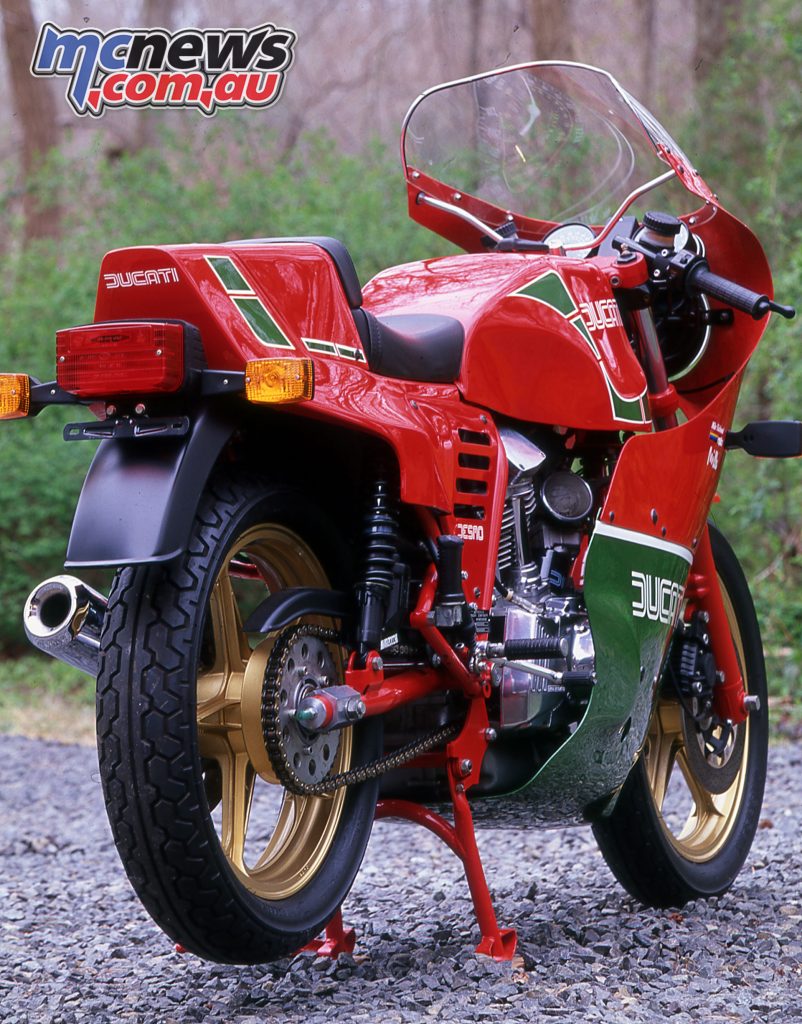
The final edition of the Mike Hailwood Replica was the Mille (or 1000) of 1984-86. Looking visually identical to the last 900, the Mille incorporated many engine changes that could have potentially made it the best of all the bevel-gear engines. Displacing 973 cc, the bore was up to 88 mm with a longer 80 mm stroke.
The most significant improvement was a one-piece forged crankshaft with plain main bearings. Elsewhere there were new primary gears and a completely revised gearbox. The only problem was the small Nippon Denso electric starter motor that was barely up to the job of cranking those large cylinders over.
Unfortunately for the Mille it was well and truly archaic by 1985. Ducati was also taken over by Cagiva at this time and the new owners considered the bevel-gear engine uneconomic to produce.
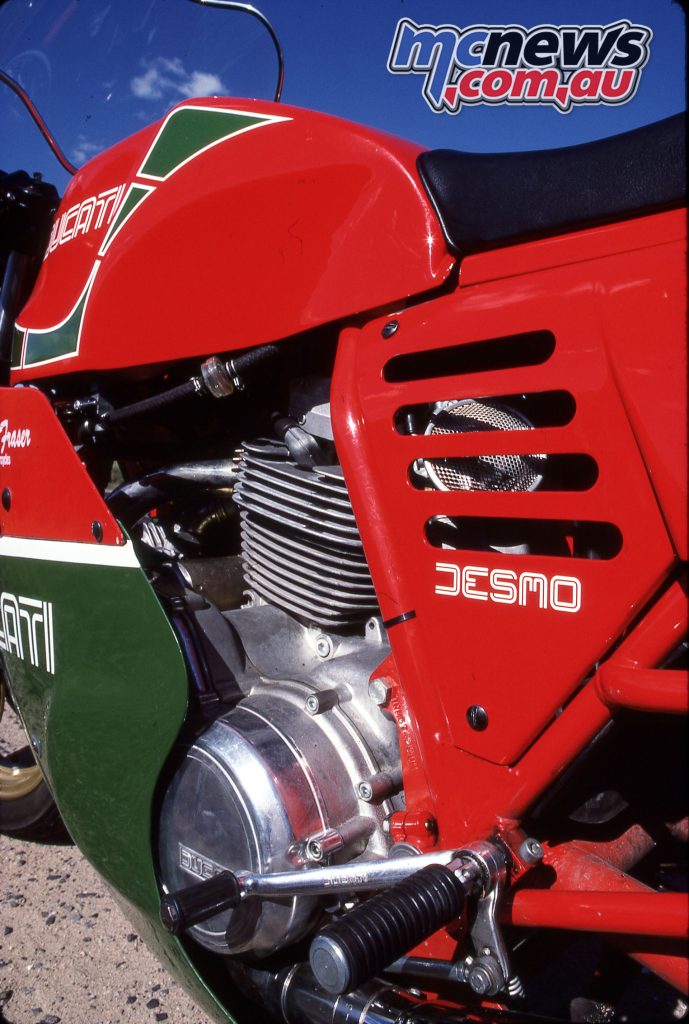
Between 1979 and 1986 Ducati built more than 7,000 Mike Hailwood Replicas but even when it was released it was arguably obsolete. While other sporting motorcycles were embracing single shock rear suspension, quicker steering geometry and 16-inch front wheels the Mike Hailwood Replica remained a relic of the past.
With its slow steering, basic non-adjustable Marzocchi front fork and twin rear shock absorbers technically it was still very similar to Ducati’s 750 twin of nearly a decade earlier.
The Mike Hailwood Replica was neither a state-of-the art sports bike nor true race replica but it had an unmistakable style and presence. Even today this is a bike that gets noticed. And it was all due to the great Mike Hailwood providing Ducati their first World Championship at the Isle of Man forty-five years ago.
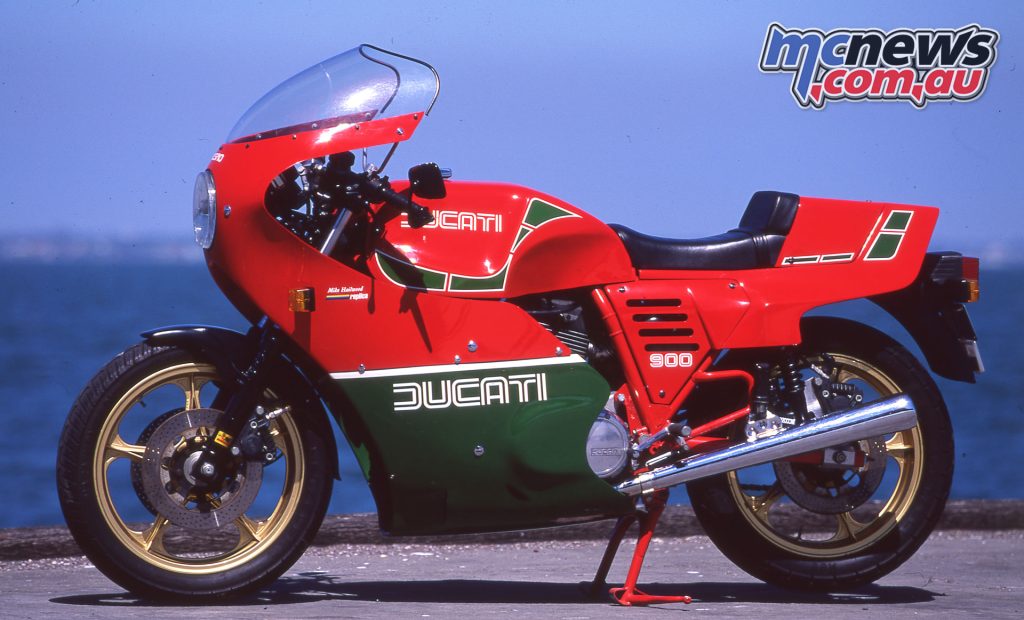
Ducati Mike Hailwood Replica Specification (1984)
| Ducati Mike Hailwood Replica Specification (1984) | |
| Engine | Four-stroke, 90-degree L-twin cylinder, SOHC, Desmodromic two-valves per cylinder, bevel gear driven, 973 cc |
| Bore x Stroke | 88 x 80 mm |
| Compression Ratio | 9.3:1 |
| Max Power | 55.9 kW [76 hp] @ 6700 rpm |
| Max Torque | 84 Nm @ 5800 rpm |
| Transmission | Five-speed |
| Front Suspension | 38 mm Marzocchi forks |
| Rear Suspension | Dual Marzocchi shocks, preload adjustment |
| Brakes | Dual 280 mm rotors, two-piston front calipers, 260 mm rear rotor, single-piston caliper |
| Tyres | 110/90-18 (F), 130/90-18 (R) |
| L X W x H | 2200 x 700 x 1250 mm |
| Wheelbase | 1500 mm |
| Seat Height | 800 mm |
| Dry Weight | 196 kg |
| Top Speed | 222 km/h (claimed) |























